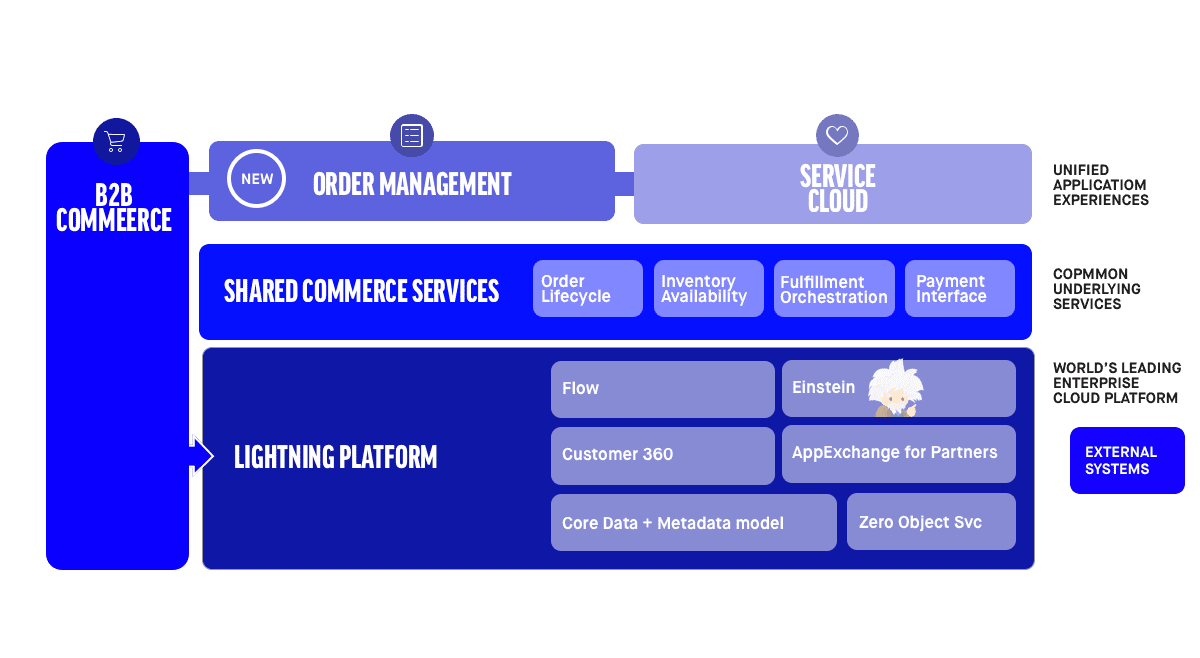Salesforce Order Management keeps things simple for you

Greater than the SOM of its parts
Thus far, we’ve covered the bigger picture of SOM. But what matters most to you is, of course, which capabilities SOM features, for you to lift your business to a higher level. Succinctly put:
Order lifecycle
- Enjoy full visibility into order status from creation through fulfilment
- Seamlessly integrate with B2C commerce orders
- Integrate orders from additional channels (such as marketplaces, POS)
Basic order fulfilment
- Orchestrate the fulfilment process for a small set of distribution centres
- Configure your fulfilment workflow via Lightning flow or Apex
- Integrate with fulfilment providers (such as WMS, ERP)
- Process payments and invoices
Payment capture &refund
- Accept both credit card and electronic payment methods
- Generate and integrate invoices with ERP
- And, coming soon: support for Adyen & gift cards (July 2020)
Order servicing
- View order history
- Process order cancellations
- Process order returns
- And, coming soon: appeasement (July 2020)
Reporting:
- Make use of order, fulfilment, payment, and returns reporting
What does the SOM roadmap look like?
As mentioned in the previous section, some SOM functionalities are not supported as of yet but will be soon. SOM promises to be a solution to several e-commerce conundrums, so rolling out its many features will take a little while.
Some things to look forward to are the distributed order management (DOM) beta in October 2020, omnichannel inventory and an even higher scale in February 2021. After that, we’ll be seeing B2B2C capabilities, subscriptions, digital goods and scheduled services.
Which is not to say that you have to be patient to enjoy what SOM has to offer. Its tools are already massive time-savers, boasting versatility and flexibility. Interested in incorporating SOM in your organization? We can help you with that, thanks to our extensive experience with order management for companies such as Tiger of Sweden, Bonmarché, Magasin Du Nord and so on.
In addition to that, as one of a select few parties that has gone through the SOM enablement process, we can really help you harness SOM: organising, managing, and supporting your business through our official partnership with Salesforce. So even things that might not be possible out-of-the-box straight away, we can help you realise through custom flows.
Curious what DEPT® and SOM could do for your business? Don’t hesitate to contact us.
More Insights?
View all InsightsQuestions?
VP eCommerce, Europe





